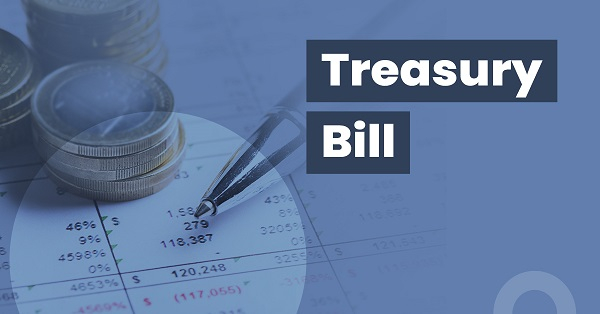The latest eruption of conflict in the Middle East has the potential to do considerable damage to markets and economies at a moment when both are vulnerable because of the US assault on global trade.
So far, Israel’s attacks on Iran have been largely confined to its nuclear facilities, its military assets and leadership and its domestic energy infrastructure. Its energy exporting infrastructure hasn’t yet been targeted.

Nearly a third of the world’s oil transits through the Strait of Hormuz each day and about 20 per cent of its LNG.Credit: Bloomberg
Markets have been unsettled, rather than disrupted, and the impact of the outbreak of hostilities has been relatively muted. The oil price did shoot up 7 per cent on Friday, but sharemarkets weakened only slightly, US bond yields fell back modestly, the US dollar strengthened marginally, and the gold price rose.
In 2022, oil prices soared above $US100 a barrel and then climbed towards $US130 a barrel after Russia invaded Ukraine. On Friday, the oil price leapt nearly 13 per cent before settling back to close 7 per cent higher at just over $US74 a barrel. It traded around $US75 a barrel over the weekend.
The relative calm in markets in response to the latest conflagration in the Middle East signals that traders believe the hostilities can be contained and that oil supplies won’t be disrupted.
That could, of course, change. Iran is a major oil producer, with production volumes of about 3.4 million barrels a day, or about 3 per cent of the world’s oil supply. It exports about 1.7 million barrels a day, mainly to China and, to a lesser extent, India.
Loading
Should its oil fields and pipelines be targeted by Israel, it would have a material impact on global supply.
That impact, however, could probably be absorbed relatively comfortably by a market where there is substantial dormant capacity because of OPEC+’s voluntary production cuts and where the market is currently oversupplied.
This year, OPEC has been gradually bringing back some of the 6 million barrels a day of production it has held back over the past three years, but there is still a lot of spare capacity on the sidelines in a market that the International Agency says is already over-suppled, with the growth rate in supply about twice that of the growth in demand.
Of far greater concern than Iran’s own production is that of the other Middle Eastern producers. Iran has the potential, if it chooses to, to close the Strait of Hormuz, the only marine entry point to the Persian Gulf and arguably the most important choke point in the global energy supply chain.
Nearly a third of the world’s oil transits through the strait each day, and about 20 per cent of its LNG. If that trade were closed, or heavily disrupted, oil prices would soar, with estimates that they would reach somewhere between $US120 and $US150 a barrel.

US President Donald Trump’s misguided trade wars have left the global economy vulnerable. Credit: Bloomberg
Traders are clearly discounting that possibility, partly because it would deprive Iran itself of its major source of revenue and upset its major customers, but more particularly because it would almost certainly drag the US, whose Fifth Fleet is based in Bahrain, directly into the conflict.
Iran has, in the past, threatened to block the strait but, apart from laying some mines during the 1980s war with Iraq, hasn’t done so.
Loading
As long as Israel refrains from attacking its oil exports and the US remains only indirectly involved (by supporting Israel’s defence against Iran’s retaliatory strikes), the arguments for keeping the strait open would be stronger than the temptation to close it.
If that were to change, it would be grim news for the rest of the world. Indeed, even the so-far relatively modest impact on oil prices isn’t helpful.
Last week, before the conflict began, the World Bank cut its forecast for global growth this year from 2.8 per cent last year to 2.3 per cent. Other economic agencies and forecasters have similarly downgraded the outlook to levels that, apart from the pandemic, were last seen in the aftermath of the 2008–09 financial crisis.
That’s because Donald Trump’s tariffs are expected to severely depress global economic growth, and growth within the US in particular.
The International Monetary Fund cut its forecast for US GDP growth by 90 basis points to a meagre 1.8 per cent earlier this year. The World Bank has US growth – 2.8 per cent last year – halving to 1.4 per cent.
Trump’s trade wars have rendered what was reasonable global growth and a strong and out-performing US economy vulnerable to exogenous shocks.
With Trump’s 10 per cent baseline tariffs on everyone already in place, the average US tariff has leapt from about 3 per cent to something in the high teens. The 90-day pause on his more draconian “reciprocal” tariffs will end on July 9, when many of America’s trading partners will face even higher rates.
The tariffs will undermine US and global growth and push up US and global inflation rates.
Conventionally, because they would adversely impact global trade and the global economy, they would also reduce demand for oil.
If Middle Eastern supply were disrupted, however, the oil price would spike and add to global inflation, increasing the threat of global stagflation, or the combination of lower growth and higher inflation.
When the US released its latest inflation data for May last week, a contributing factor to the headline number of 2.3 per cent – the best result for more than four years – was that oil prices traded as low as $US60 a barrel last month.
While the inflation data has yet to reflect the impact of the tariffs – US importers had front-loaded their orders to get in ahead of the tariffs and therefore their impact will be delayed and probably show up progressively in coming months – the surge in oil prices, thanks to the new outbreak of hostilities in the Middle East, will add to the US inflation rate.
It also introduces a new dimension of uncertainty for the US Federal Reserve Board, whose Open Market Committee meets this week.
Loading
There is no expectation that it will cut US rates at this meeting, but the prospect of a September cut – up for discussion before Israel’s attack – may have receded if oil prices remain at their current levels, or rise further. Other central banks will have to grapple with the same question mark over the trajectory of oil prices and their impacts on inflation.
Trump’s trade wars have rendered what was reasonable global growth and a strong and outperforming US economy vulnerable to exogenous shocks.
Israel, with its strikes on Iran’s nuclear capabilities and its attempt to destabilise the regime, has provided one that will already generate some wider economic stresses but has the potential to do considerably more damage if it doesn’t remain contained.
The Business Briefing newsletter delivers major stories, exclusive coverage and expert opinion. Sign up to get it every weekday morning.












